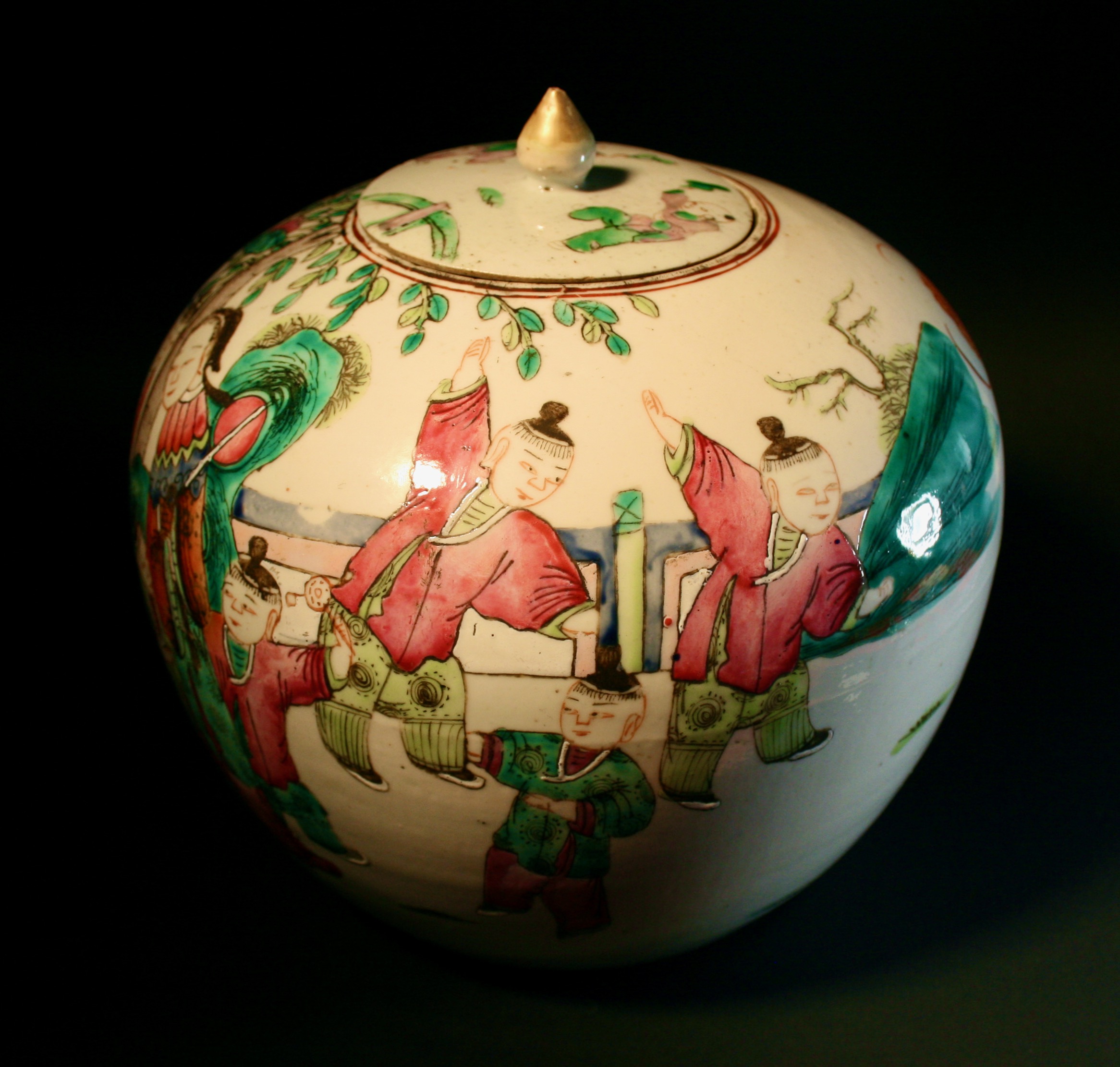

Title: 19th century Antique Chinese Ceramic Hand Painted Pottery
Shipping: $29.00
Artist: N/A
Period: 19th Century
History: Ancient Art
Origin: Central Asia > China
Condition: N/A
Item Date: N/A
Item ID: 521
This is a stunning and remarkably aged original Chinese decorative glazed earthenware lidded jar, likely dating back to the late 18th to 19th century. It stands as an exquisite antique Chinese ceramic piece adorned with intricate hand-painted glazed outdoor garden landscape scenes of its time period. Within Chinese culture, these ceramic lidded jars traditionally found purpose in storing a diverse array of herbs and spices within the household. The artistry and craftsmanship showcased in these painted creations carried profound value for individuals who possess an affinity for the delicate beauty of ceramic pottery that graces their living spaces. Beyond its aesthetic allure, owning a piece such as this distinctive jar not only exuded opulence but also symbolized privilege, epitomizing the ability to possess such an exceptionally refined and remarkable artifact. Remarkably, this specific piece remains in fantastic condition given its age, as only a few examples of such pottery that was once an everyday staple have endured from this period. Approximately 8 inches in height and 9 inches in width, this jar preserves its original size, presenting a tangible connection to the past and showcasing the fine craftsmanship of its era.
The history of late 18th to 19th century ceramic earthenware hand-painted spice jars is a captivating journey that provides insights into both the cultural and artistic aspects of the time. These jars, often referred to as lidded or covered jars, played a significant role in various societies during this period. Let's delve into the fascinating narrative behind these artifacts: During the late 18th and 19th centuries, ceramic earthenware hand-painted spice jars gained prominence as essential household items across different cultures. These jars were not only functional but also served as decorative pieces, reflecting the artistic expressions of the era. In China, for example, these jars were crafted with meticulous attention to detail and adorned with intricate hand-painted designs. They were utilized to store a diverse range of herbs, spices, and other culinary ingredients within households. The craftsmanship displayed on these jars mirrored the skill and creativity of Chinese artisans, showcasing scenes from daily life, nature, mythology, and cultural symbolism. These jars often featured vibrant colors and elaborate patterns, making them prized possessions and collectibles. Similarly, in Europe, particularly during the 19th century, ceramic earthenware hand-painted spice jars were cherished for their aesthetic appeal and practicality. These jars were part of the broader ceramic tradition of the time, and they exemplified the fusion of artistic innovation with functional utility. Artisans in countries like England, France, and Germany produced an array of exquisitely decorated spice jars, often characterized by delicate motifs, floral designs, and intricate patterns. These jars not only served the purpose of preserving and storing spices but also added a touch of elegance to domestic interiors. Their presence in kitchens and dining spaces reflected the refined taste of the homeowners and contributed to the overall ambiance of the living space. Collectors and connoisseurs of the 19th century recognized the historical and artistic significance of these ceramic earthenware spice jars. Their appreciation for craftsmanship and attention to detail contributed to the preservation of these artifacts, ensuring their legacy endured through generations. Today, these late 18th to 19th century ceramic earthenware hand-painted spice jars continue to captivate enthusiasts, historians, and art lovers alike. They serve as tangible connections to the past, offering a glimpse into the cultural, artistic, and culinary practices of a bygone era. As cherished relics of history, these jars stand as testaments to the ingenuity and creativity of artisans who left an indelible mark on the world of ceramics.